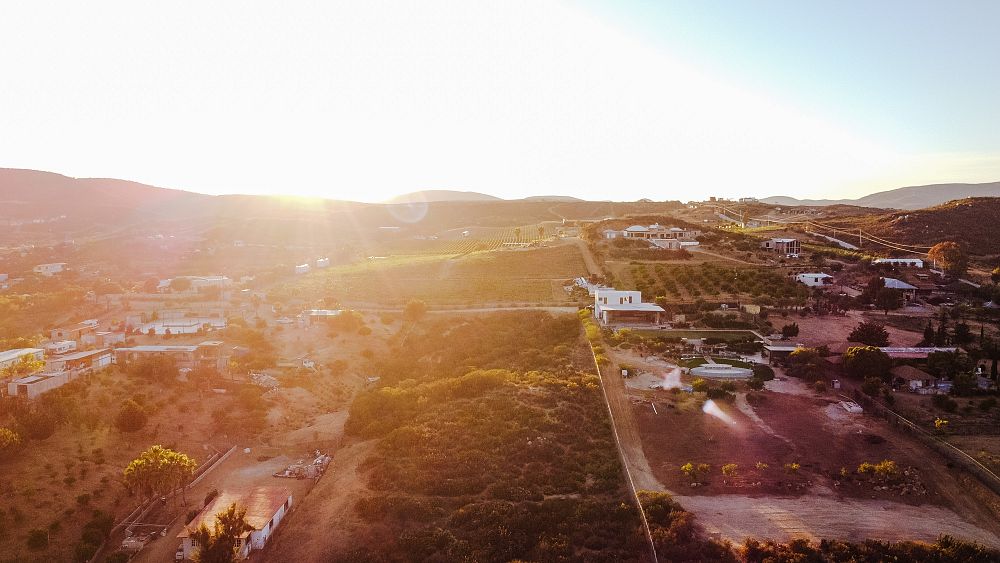Spain is ending the year on a high after coming out top in two destination rankings.
Three of the country’s villages have won awards while a Spanish town is officially home to the most beautiful street in Europe.
If you’re planning a trip to Spain in 2023, add these off the beaten track locations to your itinerary.
Here’s everything you need to know about Spain’s award-winning attractions.
Where is the most beautiful street in Europe?
UNESCO has officially announced the most beautiful street in Europe, according to its ranking.
The accolade has gone to a street in Spain, but surprisingly it’s not in Barcelona or another major city like Madrid or Seville.
In fact, the award has gone to a small street, Calle San Pedro, in a minor southern Spanish city.
The thoroughfare is found in the Andalusian town of Osuna, home to 17,000 inhabitants.
UNESCO has called the street a “walk through the 18th century.”
The buildings are an exceptional example of Andalusian baroque and have undergone few modifications over the years, the heritage organisation says.
The long, sloping street is lined with villas and mansions showcasing the evolution of Spanish architecture.
The crowning attraction is the Marquises de la Gomera Palace, a majestic house decorated with pale stone gargoyles, twisting columns and family crests.
Calle San Pedro has been described as an “open-air museum of architecture” by the Seville tourism board.
This is not the first time the road has been recognised for its cultural value. It has been a ‘Historic-Artistic Site’ since 1967.
The most beautiful villages in the world
Spain has also come out top in the United Nations World Tourism Organization’s (UNWTO) annual ranking of the best villages for tourism across the globe.
The list highlights the best small community tourism destinations around the world with an emphasis on social and environmental sustainability.
In total, 32 towns have made it onto the list. Three remote communities in Spain have been included, the most entries for a single country.
Other winners in Europe include Andermatt in Switzerland, Rasinari in Romania and Isola del Giglio in Italy.
A mediaeval Catalan town with a castle
One of the villages named as the best in the world for tourism is Rupit in Catalonia.
The hamlet’s streets and houses, hewn from natural rock, surround a 10th century castle.
Encircling the hamlet are the craggy rocks and lush forests of Collsacabra, a natural protected area popular for hiking.
From the town’s Hanging Bridge, you can get a spectacular view over the Rupit river below.
A village high in the Sierra de Guara mountains
The mountain town of Alquézar in Aragon also made the list. Located on a limestone outcrop, it has a tiny population of around 300.
Like Rupit, the settlement formed around a mediaeval castle and the name of the village derives from the Arabic for ‘fort’ or ‘castle’.
Wandering the narrow streets, you’ll get glimpses across the rugged Sierra y Cañones de Guara Natural Park where you can try abseiling, rock climbing and canyoning.
Deep in the forest, there are more than 60 limestone caves with prehistoric paintings. The region became a UNESCO World Heritage Site in 1998.
A monumental monastery in Extremadura
The third of Spain’s award-winning villages is Guadalupe in the Extremadura region.
The settlement is best known for its magnificent monastery of Santa Maria de Guadalupe, a UNESCO World Heritage site since 1993.
The 14th century complex is an extraordinary amalgamation of rich Gothic carving, delicate mudejar decorations and monumental crenellated towers.
Guadalupe is also famed for its regional cuisine with dishes like Iberian sausages, cold ‘_ajo blanco_’ soup with almonds, garlic, bread and olive oil, and chicken ‘_a lo padre Pedro_’ with peppers and tomato.


